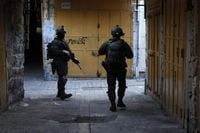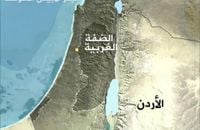Under the punishing midday sun east of Jerusalem, Yousef Jahalin tends to his goats, their shadows stretching across the arid hills of Khan al-Ahmar. His home, a cluster of shacks without running water, sits precariously between Israeli settlements and the main road leading to the Dead Sea. Hebrew graffiti, sprayed just weeks ago, spells out "nekama"—revenge—a chilling reminder of the tensions that define daily life here. For Jahalin and the other residents, the land is more than just home: it is the latest battleground in a conflict that has shaped this region for decades.
On August 2025, the Israeli government, led by Prime Minister Benjamin Netanyahu and a coalition of ultranationalist and ultra-Orthodox parties, approved the controversial E1 Jewish settlement project. According to El País, this plan covers 12 square kilometers and includes the construction of 3,410 new homes. While the number may seem modest compared to the more than 700,000 Israeli settlers already living in the West Bank and East Jerusalem, the significance of E1 lies in its location. As Aviv Tatarsky, a veteran activist with the peace group Ir Amim, explained to El País, "The key is location. It’s understood that a large settlement in the heart of the West Bank, dividing the territory into two enclaves, means there will be no Palestinian state."
The E1 project is not a new idea. It dates back to the 1990s, but no Israeli government—whether moderate or hardline—had dared to approve it until now. The reason? Foreign ministries, especially in Europe, have long warned that building E1 would sever the West Bank from East Jerusalem, the envisioned capital of a future Palestinian state, and disrupt Palestinian territorial continuity. Yet, as Netanyahu declared last week in a nearby settlement, "There will be no Palestinian state. This place is ours."
Construction is slated to begin in 2026, once the project is put out to tender. The plan will not only separate East Jerusalem from the rest of the West Bank, but also cut off key northern cities like Ramallah and Nablus from southern cities such as Bethlehem and Hebron. The result, Tatarsky said, will be "even more endless detours between checkpoints and all kinds of barriers to movement." For Palestinians, it will make daily life even more fragmented and unpredictable.
But the E1 project is only one part of a broader strategy. According to a recent analysis in Le Monde, Netanyahu is considering even more drastic measures in response to the wave of countries—including France—that recognized the State of Palestine on September 22, 2025. The most serious option on the table is the annexation of all or part of the West Bank. Such a move would be a radical shift, incorporating territory occupied since the 1967 Six-Day War directly into the State of Israel and, as Le Monde put it, "firmly closing the door to a Palestinian state."
Netanyahu, however, is not acting alone. He is awaiting the outcome of a meeting with U.S. President Donald Trump, scheduled for Friday, September 26, 2025, before making any final decisions. The Israeli leader is seeking a green light—or at least no veto—from Washington. The stakes are high: Arab Gulf countries, particularly the United Arab Emirates, have warned that annexation is a "red line" for them, threatening to unravel the diplomatic progress made under the Abraham Accords.
International law also hangs in the balance. The West Bank is considered occupied territory under United Nations Security Council Resolution 242, which calls for Israel’s withdrawal. Decades of settlement construction have already undermined this mandate, but outright annexation would be a blatant violation. The consequences, as Le Monde notes, could include harsher sanctions from Europe and a dramatic shift in the demographic balance: Israel would suddenly find itself responsible for approximately 3 million Palestinians now living in the West Bank. This raises urgent questions about their legal status and brings the specter of apartheid uncomfortably close.
For the residents of Khan al-Ahmar, these geopolitical maneuvers have deeply personal consequences. The Israeli Supreme Court approved the demolition of their community’s shanties in 2018, and demolition orders remain in force. The threat is ever-present. Jahalin, now 44, told El País that he has faced ongoing harassment, including the theft of three goats just last week. The most stable structure in the village is the school, built in 2009 with the help of 14 international aid agencies. Serving 180 children aged five to fifteen from Khan al-Ahmar and neighboring communities, the school is a symbol of resilience. Yet it, too, is under threat of closure and demolition.
Halima Zahika, the school’s principal for the past 13 years, described the anxiety that pervades the classrooms. “The students ask us: ‘What will happen to us if they close the school?’ ‘What if they kick us out?’ ‘If they kick us out, will the school close?’ ‘Will they build a new one for us?’ They’re worried... And they ask what will happen to the teachers. We try to calm them down and hide from them the fact that all this affects us too. We tell them to keep studying and that, in case, God forbid, we had to leave, we wouldn’t leave them without an education.”
The sense of siege is palpable. Eid Jahalin, the head of the community, described to El País an “economic war” waged by Israel for a quarter of a century, affecting every aspect of daily life. “The prohibition on children coming to school due to closures, the theft of donkeys or cattle... It’s like putting someone in jail, not giving them food or water, and watching them slowly die.” The approval of Plan E1, he said, “is simply the final bullet.”
On the ground, the Israeli military enforces a regime of segregated roads and checkpoints. Cars with yellow license plates—used by Jewish settlers and a handful of Palestinians—have access to Jerusalem. Palestinian cars with white or green plates are forced to take lengthy detours. The E1 project includes moving a key checkpoint 14 kilometers east of Jerusalem and building a new road to further separate Israeli and Palestinian traffic streams. The intent, activists argue, is clear: to facilitate settler mobility at the expense of Palestinians, making it possible to reach Tel Aviv from the settlements in just an hour, while Palestinians face ever more obstacles.
While Netanyahu’s government pushes forward, the international community is divided. French President Emmanuel Macron, speaking at the United Nations General Assembly, warned that the Palestinian issue risks becoming "the world’s eternal, unsolvable problem." Supporters of the two-state solution are left grappling with how to turn powerful diplomatic gestures—like recognition of Palestinian statehood—into concrete action that can alter the reality on the ground.
For now, the residents of Khan al-Ahmar live under the shadow of imminent displacement, their fate hanging on political decisions made far from their windswept hills. The E1 project, and the specter of annexation, threaten to redraw the map in ways that could make a Palestinian state impossible—a prospect that, for many, transforms long-standing fears into an urgent, daily struggle for survival.


